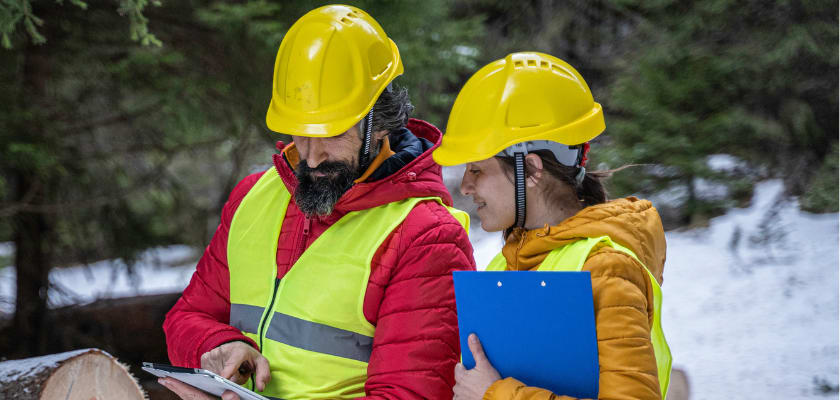Slips, trips and falls: 6 ways to combat winter hazards

Ice and snow are inevitable, but injuries to your workers and customers from slips, trips and falls are not. The key to keeping people safe from winter hazards is to be proactive with your prevention plan, says WSPS Consultant Jeff Pedlow.
This means "don't wait for the snow to fall before raising employee awareness about winter hazards" and "check in advance if your outside contractor will clear snow and ice in an emergency."
Jeff offers six tips aimed at increasing the effectiveness of your winter hazard prevention plan regarding slips and falls, and ensuring you're ready for another season.
1. Do your homework when hiring outside contractors. Don't hire a contractor based on price alone. "Too often businesses go for the lowest price or best marketing approach, and fail to do their homework beforehand. This should include a follow-up review on how effectively the snow and ice removal was performed last winter," says Jeff. "Check the qualifications. Do they have general liability insurance and a valid WSIB certificate? Will they come out during emergency situations to ensure everything is still safe for your employees and customers?"
2. Decide how your maintenance staff and outside contractor will work together to ensure the workplace is always free of winter hazards. Responsibility for keeping stairs, floors, entranceways clear of ice and snow typically rests on the employer's own staff, but they may also have to take on the walkways and the parking lot if the contractor is absent and conditions require it. "You're still responsible for ensuring there are no injuries to workers or customers," so make sure your employees are well trained and have the right equipment to do the job. Thoroughly read and understand your contractor agreement and possible building lease agreement.
3. Raise awareness of winter hazards and solutions among all staff in advance. "All too often our winter footwear is still in storage or we have forgotten that we still need to purchase it," says Jeff. Use existing communication techniques. For example:
- place posters in high visibility areas, such as washrooms, lunch areas, and wherever else people congregate
- encourage supervisors to add winter safety to safety talks. Possibilities include watching out for and reporting hazards, and wearing proper footwear (low heels, warm, waterproof, good ice/snow traction, etc.)
4. Identify and assess winter hazards throughout the season. Use every tool at your disposal, including daily inspections, incident reports, complaints, and one-up observations. Are snow and ice promptly cleared from walkways, parking lots and loading docks? Are they deposited in a safe place? Are entrances and exits to buildings unobstructed and overhanging snowdrifts removed? Are parking lot sight lines open? Could melting runoff turn into black ice?
5. Review the ice and snow removal process in the spring. "Identify gaps while it's fresh on everyone's mind. Talk to the joint health and safety committee and workers, then make changes before the new contract goes out for quotes in August or September."
6. Review your prevention plan on an annual basis. Are you legally still compliant? Is your program controlling winter hazards? Ask employees about near misses. Cross-reference your own records with statistics regarding the frequency and type of injuries that are occurring.
How WSPS can help
-
Check out our extensive range of slip, trip and fall resources, including training, eCourses and free downloads.
-
Connect with our customer care team about how we can help you identify and assess hazards, and draft policies and procedures. Contact our team online or call 1-877-494-WSPS (9777).




